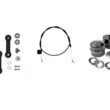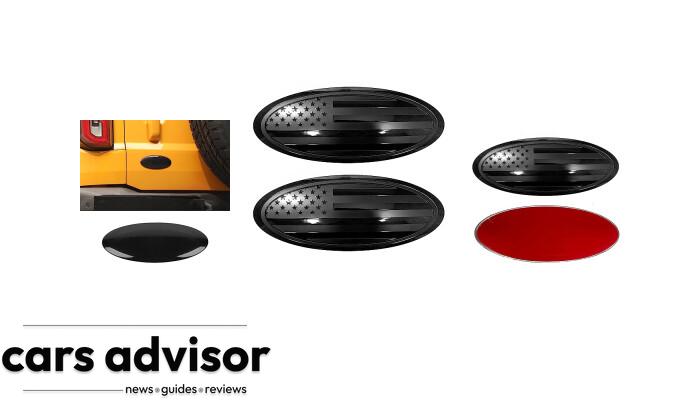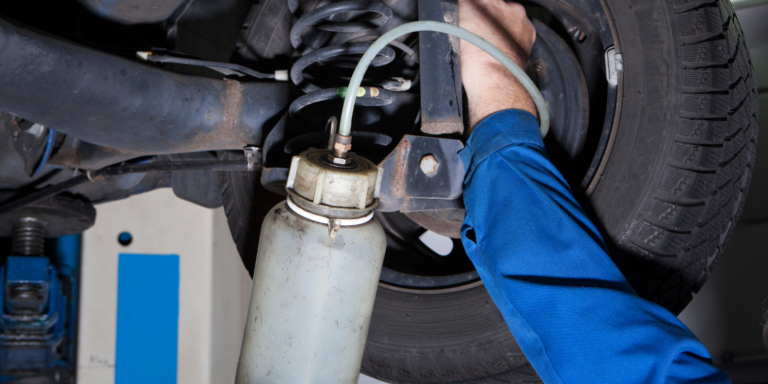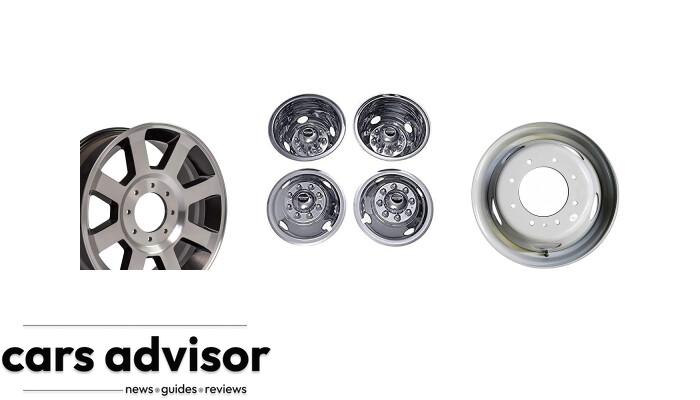Understanding Toyota’s Transmission Maintenance
To properly maintain your Toyota’s transmission, it is essential to understand the recommended transmission fluid change interval. These signs indicate a fluid replacement and whether you have an automatic or manual transmission is necessary.Recommended Transmission Fluid Change Interval
As a Toyota owner, it’s essential to pay attention to the recommended transmission fluid change interval for your vehicle. Following these guidelines can help ensure your car runs smoothly and maintains longevity. The general rule is that most manufacturers recommend changing manual transmission fluid every 30,000 to 60,000 miles.It’s crucial to rely on these numbers blindly and regularly inspect your vehicle’s transmission fluid condition. Doing this can help you identify potential issues early and adjust as needed.For instance, if you operate your Toyota under severe driving conditions such as frequent stop-and-go traffic or heavy towing, it may be necessary to change the transmission fluid more frequently than recommended in the owner’s manual.
The general rule is that most manufacturers recommend changing manual transmission fluid every 30,000 to 60,000 miles.It’s crucial to rely on these numbers blindly and regularly inspect your vehicle’s transmission fluid condition. Doing this can help you identify potential issues early and adjust as needed.For instance, if you operate your Toyota under severe driving conditions such as frequent stop-and-go traffic or heavy towing, it may be necessary to change the transmission fluid more frequently than recommended in the owner’s manual.Automatic Vs Manual Transmission Fluid Change
When it comes to transmission fluid changes, it’s essential to know the differences between automatic and manual transmission fluid changes. This is because the process and intervals for changing the fluids vary based on the transmission type.The following table highlights the key differences between automatic and manual transmission fluid change:
This is because the process and intervals for changing the fluids vary based on the transmission type.The following table highlights the key differences between automatic and manual transmission fluid change:| Automatic Transmission Fluid Change | Manual Transmission Fluid Change |
|---|---|
| Toyota recommends changing transmission fluid every 90,000 miles or so. | Most manufacturers recommend changing manual transmission fluid every 30,000 to 60,000 miles. |
| The process involves replacing old, dirty fluid with new, clean fluid and can take longer due to the complexity of the automatic transmission. | The process typically involves draining the old fluid, cleaning the drain plug, and refilling with new fluid, which is simpler than automatic transmission fluid change. |
| Automatic transmission fluid is specifically designed for automatic transmissions to provide smoother gear shifts and prevent slippage. | Manual transmission fluid is formulated for manual transmissions to ensure proper gear engagement and reduce wear and tear. |
| Toyota CVT transmission fluid change interval may differ from other types of automatic transmissions. | The specific type of fluid the manufacturer recommends should be used for manual transmissions. |
Signs That Your Transmission Fluid Needs To Be Replaced
Knowing the signs that your Toyota’s transmission fluid needs replacing is crucial for a car owner.Here are some signs to look out for:- Dark Fluid – Check your transmission fluid; if it looks dark and smells burnt, it may be time to replace it.
- Sediments – If you notice small pieces of metal or other debris in the fluid, it might be time for a replacement.
- Gear Shifting Problems – It could indicate low transmission fluid levels if you’re having difficulty shifting gears or notice any slipping, slow response times, or bucking during gear changes.
- Unusual Noises – A grinding or whining noise from your car’s engine could mean the old transmission fluid doesn’t provide enough lubrication.
- Burning Smell – A burning smell from your car is often caused by overheated transmission fluid, indicating that servicing is required.
Does Toyota Recommend Transmission Flush?
To determine whether Toyota recommends a transmission flush, it is important to understand the definition of a transmission flush and the factors that should be considered.Defining Transmission Flush
Before we dive deeper into whether or not Toyota recommends transmission flush, it’s crucial to understand what this process entails. A transmission flush is a maintenance procedure where all of the old fluid in a vehicle’s transmission system is forcibly removed through high-pressure equipment and replaced with new fluid.This method is often confused with a typical fluid replacement, which involves draining and replacing the old fluid with new oil.Unlike a standard drain-and-fill, which only replaces about half of the total volume of oil at once, flushing removes all dirty oil from the entire system.It can effectively clean the dirt, debris, and sediments built up within your car’s transmission over time.Factors To Consider For Transmission Flush
Before considering getting a transmission flush, there are some factors you should take into account.These include:- The age and mileage of your vehicle: It may not need a transmission flush if it is relatively new. It may be worth considering if it’s an older car or has high mileage.
- The condition of the transmission fluid: Before deciding whether to get a flush, check the fluid’s colour and consistency. A transmission flush might be necessary if it’s dark and contaminated with sediment or debris.
- The transmission type: Different transmissions may require different maintenance procedures. For example, CVT transmissions often require special fluid that can be expensive to replace.
- Your driving habits: If you frequently drive in stop-and-go traffic or tow heavy loads, your transmission may experience more stress than usual and require frequent maintenance.
- Cost: Transmission flushes can be costly, so it’s important to consider whether it’s worth the investment for your specific situation.
Toyota’s Official Recommendation
As a Toyota owner, I was curious about the brand’s official recommendation regarding transmission flush. After researching and reviewing Toyota’s maintenance guidelines, it is evident that their stance on transmission flush depends on the vehicle.If your car’s system contains dirt or debris, a flush may be necessary to remove contaminants effectively.To ensure optimal performance of my Highlander transmission, I plan to follow Toyota’s recommended maintenance schedule of changing the automatic transmission fluid every 90,000 miles.Additionally, regular inspections are crucial in detecting potential issues before they become major problems.Although flushing has fallen out of vogue due to its potential risks and costs compared to fluid replacement or drain/fill options – it can still benefit some vehicles depending on their unique circumstances.What Does the ‘S’ Stand for in a Toyota Car Model?
The meaning of the ‘s’ in a car is often associated with sportiness or style. In Toyota car models, the ‘S’ typically stands for Sport. This signifies that the car is designed with enhanced performance features, both in terms of handling and speed. The ‘S’ badge adds a touch of excitement and athleticism to the Toyota lineup.
Pros And Cons Of Transmission Flushes
A transmission flush has benefits, such as removing old automatic transmission fluid and sludge from the system. Still, it also comes with potential risks and damages, including dislodging sediment that can cause issues in the future.Benefits Of A Transmission Flush
I highly recommend performing a transmission flush every 30,000 miles as preventative maintenance.Flushing the transmission fluid has some fantastic benefits, including:- Removing old automatic transmission fluid: Over time, old transmission fluid can break down and cause damage to your vehicle’s engine. A flush replaces this old fluid with fresh and clean fluid.
- Reducing sludge and grime build-up: When the transmission fluid gets dirty, it can create buildup in the system, affecting its performance. Flushing removes any accumulated contaminants such as dust, dirt, or debris.
- Improving shifting performance: Fresh transmission fluids help ensure smooth gear shifts, reducing rough shifting problems that can cause unnecessary wear and tear on your vehicle.
- Extending the lifespan of your vehicle’s transmission: Routine maintenance, such as a flush, can increase the longevity of your car’s transmission by keeping it clean and running smoothly.
Potential Risks And Damages
As with any maintenance procedure, a transmission flush has potential risks and damages.Here are some of the things you should be aware of before getting your transmission flushed:- Flushing the transmission can cause damage to the seals and gaskets within the system. The high-pressure flushing process can dislodge these components, leading to leaks and other problems.
- In rare cases, flushing can cause blockages in the transmission. Sediment or debris that has settled inside the system can be dislodged during a flush, causing further problems.
- Flushing could worsen if your transmission has experienced significant damage or wear and tear. The high-pressure process can exacerbate existing problems and lead to more extensive repairs.
- Flushing may not always be necessary or effective. In some cases, simply changing the fluid could be enough to restore proper function to your transmission without risking damage from a flush.
Cost Comparison Of Transmission Flush Vs Fluid Replacement
As an experienced Toyota technician, I always advise my clients to follow the manufacturer’s recommended maintenance schedule for their vehicle’s transmission.When comparing a transmission flush versus fluid replacement, it is essential to understand that it requires additional time and equipment, leading to higher costs.For example, while fluid replacement can cost between $80-$250, a transmission flush may run upwards of $300-$500.However, flushing also removes dirt and debris from the entire system instead of replacing some of the old fluid with new ones, like regular fluid changes.It is important to note that Toyota recommends either method based on specific criteria for each vehicle and its needs rather than simply one-size-fits-all advice.Ultimately, following Toyota’s maintenance guidelines will ensure your transmission performs optimally over an extended period while avoiding potentially costly repairs down the line.”Alternatives To Transmission Flushes
Expert recommendations for Toyota’s transmission maintenance include regular fluid checks and changes according to the recommended intervals listed in the owner’s manual and using only Toyota-approved transmission fluids to ensure proper function and longevity of the system.Expert Recommendations For Toyota’s Transmission Maintenance
As an expert in Toyota’s transmission maintenance, I recommend the following steps to keep your car’s transmission running smoothly:- Follow the recommended maintenance schedule for your Toyota as outlined in the owner’s manual. This will ensure that you change the transmission fluid when necessary and take care of any other issues before they become significant problems.
- Regularly inspect for sediment or grime in the transmission fluid. If you see any, it may be time to change the fluid or consider a flush.
- Avoid harsh driving conditions like towing heavy loads or excessive stop-and-go traffic that can stress your transmission.
- Don’t hesitate to get professional help from a certified Toyota mechanic if you have concerns about your car’s transmission performance.
- Consider upgrading to synthetic transmission fluid, which has improved lubrication properties and a longer lifespan than traditional fluids.
Importance Of Following Toyota’s Maintenance Guidelines
As a Toyota owner, following the manufacturer’s recommended maintenance guidelines for your vehicle is essential.Regular transmission maintenance and fluid replacement prevent critical issues from arising that can have severe consequences on your car’s performance and longevity.Toyota recommends changing the transmission fluid every 90,000 miles, which may differ based on driving conditions and specific models.Following these guidelines will preserve your vehicle’s warranty while ensuring the optimal operation of its components.Additionally, preventative transmission maintenance, such as flushing out old fluids every 30,000 miles, helps remove sediment buildup in the system that could lead to clogging or restricted flow.Maintenance Alternatives To Ensure Toyota’s Transmission Performance
One of the critical aspects of owning a Toyota vehicle is maintaining its transmission to ensure its performance. Here are some alternatives to help prolong your transmission’s life and maintain its performance:- Change Transmission Fluid Regularly: Changing the fluid in your Toyota’s transmission on schedule or sooner will help keep it running smoothly.
- Inspect Transmission Fluid for Debris: Checking your car’s owner’s manual for what transmission fluid looks like when its colour changes can help detect debris build-up and alert you when cleaning is necessary.
- Use High-Quality Fluids: Utilizing only high-quality fluids that meet or exceed the recommended Toyota specifications while performing routine checks will help protect your vehicle’s transmission.
- Drive Safely: Operating a vehicle safely can also impact maintaining the health of your transmission; this includes cautious driving, avoiding overloading and excessive towing, and regulating speeding.
- Follow Recommended Maintenance Schedule: Keeping up with recommended maintenance practices from your manufacturer ensures that your car remains in top shape, reducing potential risks of major issues arising from neglecting routine services.






















